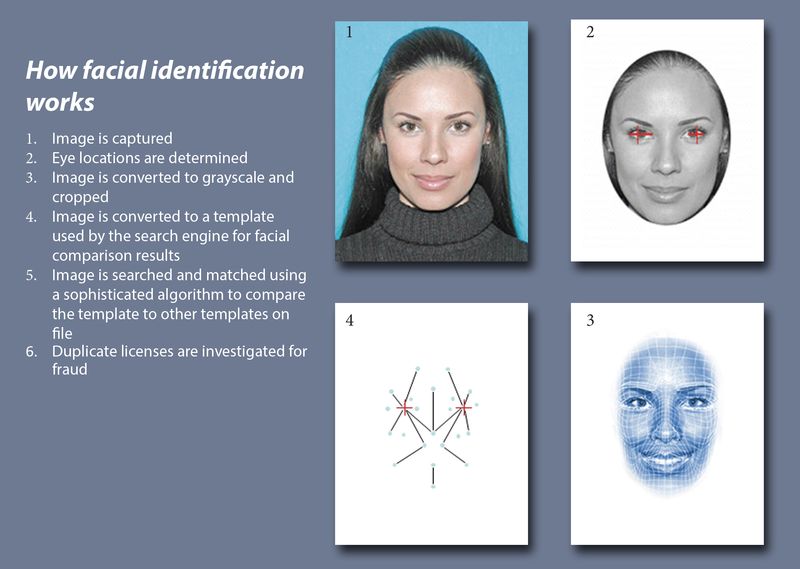
How does it work?
Facial recognition software works by focusing on the nodal points on a person’s face, creating an image out of those points, storing the data collected as a faceprint, and then comparing the faceprint to others and separating them. Nodal points are endpoints used to measure variables on a person’s face, such as the length and width of the lips, the depth of the eye sockets, and the shape of a nose. Once this data is collected, it is stored as a digital image or a faceprint. This faceprint is then used as a base for comparing and identifying who the person is. To learn more about how facial recognition works, please click here.
Where is facial recognition used?
As mentioned before, devices such as our phones, carry some form of facial recognition software. Once a picture is taken on an iPhone, it analyzes the facial features and then stores the data as a collection of individuals on the phone. The new iPhone X has the capabilities to unlock your phone by placing your face in front of the screen. Facial recognition is also used for security and law enforcement purposes. Law enforcement uses facial recognition to identify and apprehend suspects in a crime.
A few drawbacks of facial recognition
Facial recognition software isn't completely perfect. There are many variables that go into identifying a person by their facial features and this leaves room for error. According to the article, What is Facial Recognition?: How computers use face scan technology to identify users, here are some limitations that come with facial recognition.
Poor resolution images and poor lighting can reduce the accuracy of face-scanning results.
- Different angles and facial expressions, even a simple smile, can pose challenges for face matching systems.
- Facial recognition loses accuracy when the person is wearing items like glasses, hats, scarves, or hairstyles that cover part of the face. Makeup and facial hair can also pose issues for face detection programs.
- Facial scans don’t necessarily connect with a profile, meaning that a scan of a person’s face may not be useful if there are no photos of them in an accessible database. Without a match, the identity of the person behind the face scan can remain a mystery.
- https://www.eff.org/pages/face-recognition
- https://www.youtube.com/watch?v=hgTBLLMtpUA
- https://www.lifewire.com/how-does-a-computer-recognize-your-face-4154178
- https://searchenterpriseai.techtarget.com/definition/facial-recognition
- What are some other limitations of facial recognition?
- How can facial recognition be harmful to our society?
- What are some ethical/unethical implications that come with facial recognition?
Andrea, this was a great post and especially because Facial Recognition is something that I use everyday to unlock my Iphone. One of the interesting things that I think about are some of the ways that Facial Recognition might be used that we don't know about such as in airports or even ways that it might be used to take advantage of people in general. Great Post!
ReplyDeleteHey Andrea,
ReplyDeleteI found this post to be informational and interesting because facial recognition systems are becoming a more commonly used form of technology. Even though there is a lot of pro’s to facial recognition I think that another limitation is the image size and quality. Like you said face-detection systems compares pictures in a database to the image being searched; but, if the image being compared is not of good quality or its too small then the system is unable to properly scan for faces.
Thank you for sharing your insight on the technology, facial recognition. I found this interesting because I've always wondered how it works. We are starting to see it more and more especially in increasing security. I first noticed facial recognition on Facebook where the social media application would guess who you want to tag. One thing that is interesting is that sometimes the iPhone X can recognize their owner even when they have sunglasses on. After learning that this is how facial recognition works, I'm curious how the iPhone would still be able to recognize the person even if they couldn't exactly view the distance between eyes, for example. Some limitations of facial recognition include the ability to recognize from a distance. Facial recognition could be harmful to our society because people could abuse the power to recognize a person's face by possibly using a picture to get into someones phone. Companies that use facial recognition could use these pictures for other reasons which would be unethical. Thank you again for sharing!
ReplyDelete